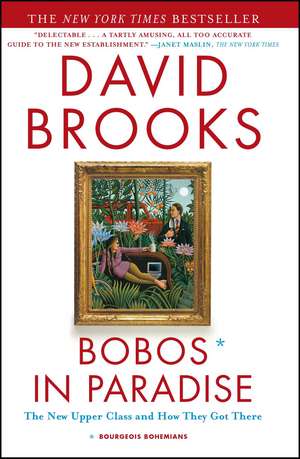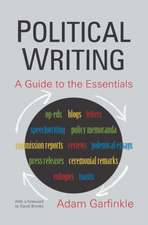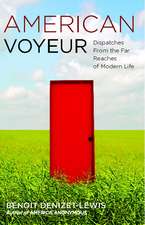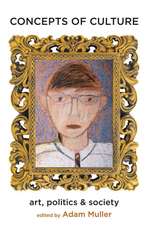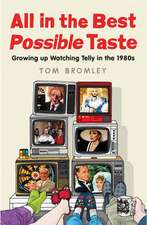Bobos in Paradise: The New Upper Class and How They Got There
Autor David Brooksen Limba Engleză Paperback – 20 aug 2001
Preț: 97.74 lei
Nou
Puncte Express: 147
Preț estimativ în valută:
18.70€ • 20.31$ • 15.71£
18.70€ • 20.31$ • 15.71£
Carte disponibilă
Livrare economică 01-15 aprilie
Preluare comenzi: 021 569.72.76
Specificații
ISBN-13: 9780684853789
ISBN-10: 0684853787
Pagini: 288
Ilustrații: index
Dimensiuni: 140 x 214 x 20 mm
Greutate: 0.27 kg
Ediția:New ed.
Editura: Simon&Schuster
Colecția Simon & Schuster
Locul publicării:United Kingdom
ISBN-10: 0684853787
Pagini: 288
Ilustrații: index
Dimensiuni: 140 x 214 x 20 mm
Greutate: 0.27 kg
Ediția:New ed.
Editura: Simon&Schuster
Colecția Simon & Schuster
Locul publicării:United Kingdom
Notă biografică
David Brooks writes a biweekly Op-Ed column for The New York Times and appears regularly on PBS's The NewsHour with Jim Lehrer and NPR's All Things Considered. He lives in Bethesda, Maryland.
Extras
Introduction
This book started with a series of observations. After four and a half years abroad, I returned to the United States with fresh eyes and was confronted by a series of peculiar juxtapositions. WASPy upscale suburbs were suddenly dotted with arty coffeehouses where people drank little European coffees and listened to alternative music. Meanwhile, the bohemian downtown neighborhoods were packed with multimillion-dollar lofts and those upscale gardening stores where you can buy a faux-authentic trowel for $35.99. Suddenly massive corporations like Microsoft and the Gap were on the scene, citing Gandhi and Jack Kerouac in their advertisements. And the status rules seemed to be turned upside down. Hip lawyers were wearing those teeny tiny steel-framed glasses because now it was apparently more prestigious to look like Franz Kafka than Paul Newman.
The thing that struck me as oddest was the way the old categories no longer made sense. Throughout the twentieth century it's been pretty easy to distinguish between the bourgeois world of capitalism and the bohemian counterculture. The bourgeoisie were the square, practical ones. They defended tradition and middle-class morality. They worked for corporations, lived in suburbs, and went to church. Meanwhile, the bohemians were the free spirits who flouted convention. They were the artists and the intellectuals -- the hippies and the Beats. In the old schema the bohemians championed the values of the radical 1960s and the bourgeois were the enterprising yuppies of the 1980s.
But I returned to an America in which the bohemian and the bourgeois were all mixed up. It was now impossible to tell an espresso-sipping artist from a cappuccino-gulping banker. And this wasn't just a matter of fashion accessories. I found that if you investigated people's attitudes toward sex, morality, leisure time, and work, it was getting harder and harder to separate the antiestablishment renegade from the pro-establishment company man. Most people, at least among the college-educated set, seemed to have rebel attitudes and social-climbing attitudes all scrambled together. Defying expectations and maybe logic, people seemed to have combined the countercultural sixties and the achieving eighties into one social ethos.
After a lot of further reporting and reading, it became clear that what I was observing is a cultural consequence of the information age. In this era ideas and knowledge are at least as vital to economic success as natural resources and finance capital. The intangible world of information merges with the material world of money, and new phrases that combine the two, such as "intellectual capital" and "the culture industry," come into vogue. So the people who thrive in this period are the ones who can turn ideas and emotions into products. These are highly educated folk who have one foot in the bohemian world of creativity and another foot in the bourgeois realm of ambition and worldly success. The members of the new information age elite are bourgeois bohemians. Or, to take the first two letters of each word, they are Bobos.
These Bobos define our age. They are the new establishment. Their hybrid culture is the atmosphere we all breathe. Their status codes now govern social life. Their moral codes give structure to our personal lives. When I use the word establishment, it sounds sinister and elitist. Let me say first, I'm a member of this class, as, I suspect, are most readers of this book. We're not so bad. All societies have elites, and our educated elite is a lot more enlightened than some of the older elites, which were based on blood or wealth or military valor. Wherever we educated elites settle, we make life more interesting, diverse, and edifying.
This book is a description of the ideology, manners, and morals of this elite. I start with the superficial things and work my way to the more profound. After a chapter tracing the origins of the affluent educated class, I describe its shopping habits, its business culture, its intellectual, social, and spiritual life. Finally, I try to figure out where the Bobo elite is headed. Where will we turn our attention next? Throughout the book I often go back to the world and ideas of the mid-1950s. That's because the fifties were the final decade of the industrial age, and the contrast between the upscale culture of that time and the upscale culture of today is stark and illuminating. Furthermore, I found that many of the books that really helped me understand the current educated class were written between 1955 and 1965, when the explosion in college enrollments, so crucial to many of these trends, was just beginning. Books like The Organization Man, The Death and Life of Great American Cities, The Affluent Society, The Status Seekers, and The Protestant Establishment were the first expressions of the new educated class ethos, and while the fever and froth of the 1960s have largely burned away, the ideas of these 1950s intellectuals continue to resonate.
Finally, a word about the tone of this book. There aren't a lot of statistics in these pages. There's not much theory. Max Weber has nothing to worry about from me. I just went out and tried to describe how people are living, using a method that might best be described as comic sociology. The idea is to get at the essence of cultural patterns, getting the flavor of the times without trying to pin it down with meticulous exactitude. Often I make fun of the social manners of my class (I sometimes think I've made a whole career out of self-loathing), but on balance I emerge as a defender of the Bobo culture. In any case, this new establishment is going to be setting the tone for a long time to come, so we might as well understand it and deal with it.
Copyright © 2000 by David Brooks
This book started with a series of observations. After four and a half years abroad, I returned to the United States with fresh eyes and was confronted by a series of peculiar juxtapositions. WASPy upscale suburbs were suddenly dotted with arty coffeehouses where people drank little European coffees and listened to alternative music. Meanwhile, the bohemian downtown neighborhoods were packed with multimillion-dollar lofts and those upscale gardening stores where you can buy a faux-authentic trowel for $35.99. Suddenly massive corporations like Microsoft and the Gap were on the scene, citing Gandhi and Jack Kerouac in their advertisements. And the status rules seemed to be turned upside down. Hip lawyers were wearing those teeny tiny steel-framed glasses because now it was apparently more prestigious to look like Franz Kafka than Paul Newman.
The thing that struck me as oddest was the way the old categories no longer made sense. Throughout the twentieth century it's been pretty easy to distinguish between the bourgeois world of capitalism and the bohemian counterculture. The bourgeoisie were the square, practical ones. They defended tradition and middle-class morality. They worked for corporations, lived in suburbs, and went to church. Meanwhile, the bohemians were the free spirits who flouted convention. They were the artists and the intellectuals -- the hippies and the Beats. In the old schema the bohemians championed the values of the radical 1960s and the bourgeois were the enterprising yuppies of the 1980s.
But I returned to an America in which the bohemian and the bourgeois were all mixed up. It was now impossible to tell an espresso-sipping artist from a cappuccino-gulping banker. And this wasn't just a matter of fashion accessories. I found that if you investigated people's attitudes toward sex, morality, leisure time, and work, it was getting harder and harder to separate the antiestablishment renegade from the pro-establishment company man. Most people, at least among the college-educated set, seemed to have rebel attitudes and social-climbing attitudes all scrambled together. Defying expectations and maybe logic, people seemed to have combined the countercultural sixties and the achieving eighties into one social ethos.
After a lot of further reporting and reading, it became clear that what I was observing is a cultural consequence of the information age. In this era ideas and knowledge are at least as vital to economic success as natural resources and finance capital. The intangible world of information merges with the material world of money, and new phrases that combine the two, such as "intellectual capital" and "the culture industry," come into vogue. So the people who thrive in this period are the ones who can turn ideas and emotions into products. These are highly educated folk who have one foot in the bohemian world of creativity and another foot in the bourgeois realm of ambition and worldly success. The members of the new information age elite are bourgeois bohemians. Or, to take the first two letters of each word, they are Bobos.
These Bobos define our age. They are the new establishment. Their hybrid culture is the atmosphere we all breathe. Their status codes now govern social life. Their moral codes give structure to our personal lives. When I use the word establishment, it sounds sinister and elitist. Let me say first, I'm a member of this class, as, I suspect, are most readers of this book. We're not so bad. All societies have elites, and our educated elite is a lot more enlightened than some of the older elites, which were based on blood or wealth or military valor. Wherever we educated elites settle, we make life more interesting, diverse, and edifying.
This book is a description of the ideology, manners, and morals of this elite. I start with the superficial things and work my way to the more profound. After a chapter tracing the origins of the affluent educated class, I describe its shopping habits, its business culture, its intellectual, social, and spiritual life. Finally, I try to figure out where the Bobo elite is headed. Where will we turn our attention next? Throughout the book I often go back to the world and ideas of the mid-1950s. That's because the fifties were the final decade of the industrial age, and the contrast between the upscale culture of that time and the upscale culture of today is stark and illuminating. Furthermore, I found that many of the books that really helped me understand the current educated class were written between 1955 and 1965, when the explosion in college enrollments, so crucial to many of these trends, was just beginning. Books like The Organization Man, The Death and Life of Great American Cities, The Affluent Society, The Status Seekers, and The Protestant Establishment were the first expressions of the new educated class ethos, and while the fever and froth of the 1960s have largely burned away, the ideas of these 1950s intellectuals continue to resonate.
Finally, a word about the tone of this book. There aren't a lot of statistics in these pages. There's not much theory. Max Weber has nothing to worry about from me. I just went out and tried to describe how people are living, using a method that might best be described as comic sociology. The idea is to get at the essence of cultural patterns, getting the flavor of the times without trying to pin it down with meticulous exactitude. Often I make fun of the social manners of my class (I sometimes think I've made a whole career out of self-loathing), but on balance I emerge as a defender of the Bobo culture. In any case, this new establishment is going to be setting the tone for a long time to come, so we might as well understand it and deal with it.
Copyright © 2000 by David Brooks
Cuprins
Contents
Introduction
1 • The Rise of the Educated Class
2 • Consumption
3 • Business Life
4 • Intellectual Life
5 • Pleasure
6 • Spiritual Life
7 • Politics and Beyond
Acknowledgments
Index
Introduction
1 • The Rise of the Educated Class
2 • Consumption
3 • Business Life
4 • Intellectual Life
5 • Pleasure
6 • Spiritual Life
7 • Politics and Beyond
Acknowledgments
Index
Recenzii
Janet Maslin The New York Times Delectable...a tartly amusing, all too accurate guide to the new establishment.
Chris Tucker The Dallas Morning News Thanks to Brooks, bobos will join preppies, yuppies, and angry white males in the American lexicon.
Emily Prager The Wall Street Journal Hilarious and enlightening.
Jonathan Yardley The Washington Post Perceptive and amusing. [Brooks] has identified the salient characteristics of this new elite, and he describes them with accuracy and wit.
Chris Tucker The Dallas Morning News Thanks to Brooks, bobos will join preppies, yuppies, and angry white males in the American lexicon.
Emily Prager The Wall Street Journal Hilarious and enlightening.
Jonathan Yardley The Washington Post Perceptive and amusing. [Brooks] has identified the salient characteristics of this new elite, and he describes them with accuracy and wit.
Descriere
In this witty report, Brooks identifies the Bobos, bourgeois bohemians, the new strivers whose culture, tastes and attitudes have replaced the older elite by melding into the bohemians.
